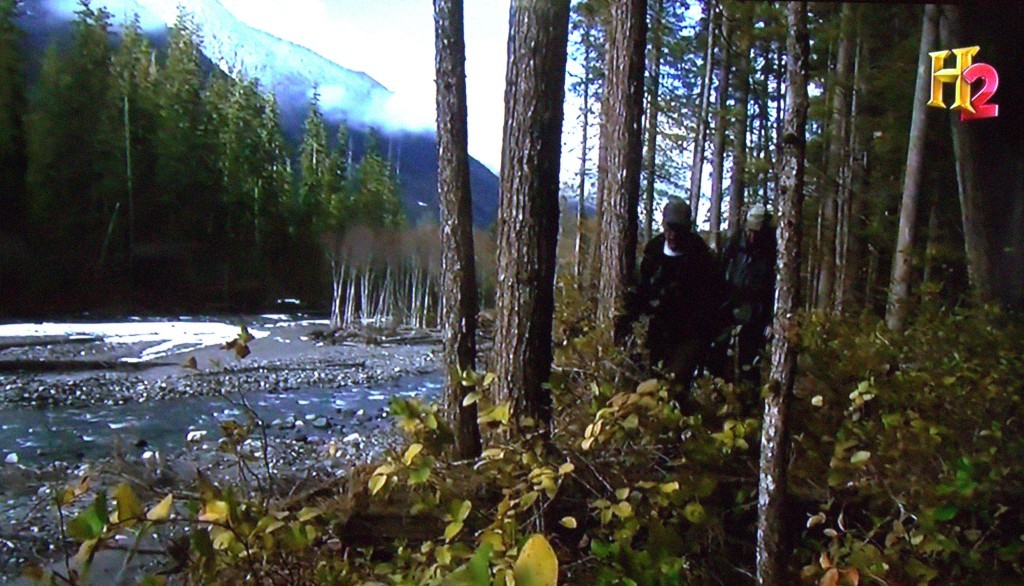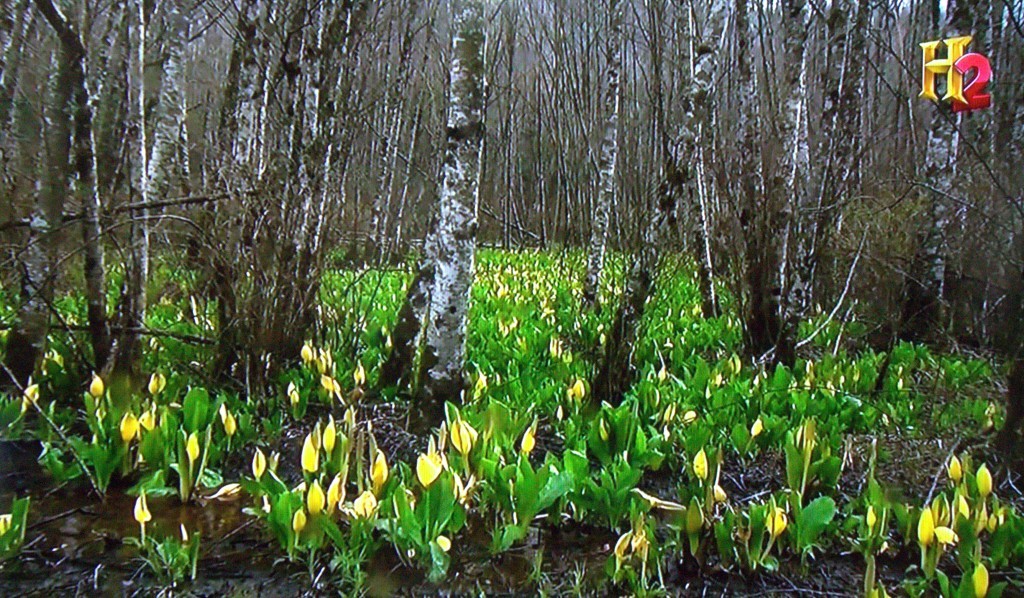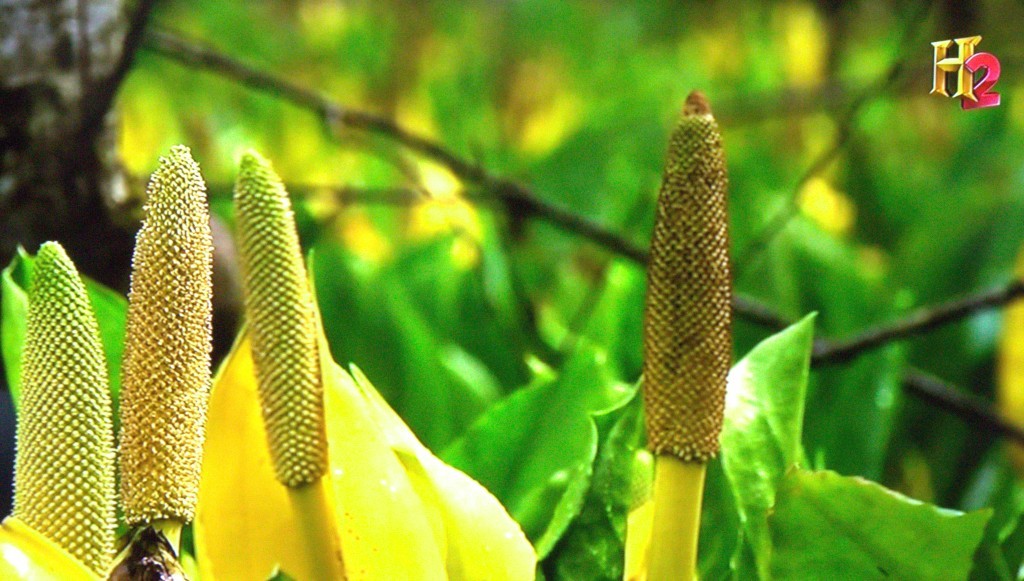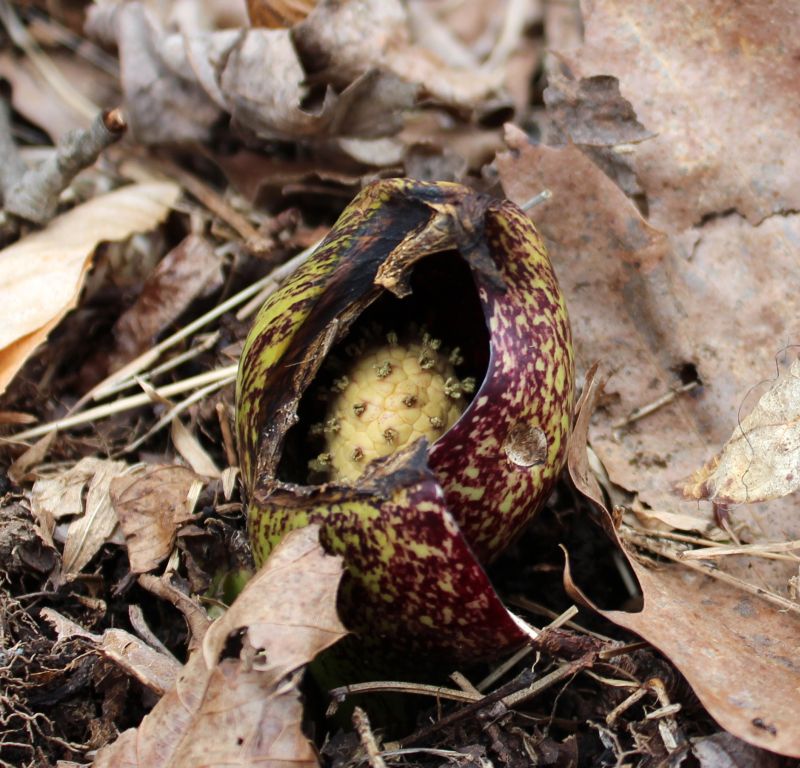The different flavors of The Discovery Channel or The History Channel are the TV channels most likely to be left on all day in my house. I was going about a few chores just this week when I overhead a familiar name and so I turned my attention to the big screen.
Somebody was talking about skunk cabbage as something bears like to eat and when I looked up at the TV I saw a plant that was not what I know to be skunk cabbage. The H2 channel was running some silly program — yeah I’m not convinced — about Bigfoot.
The people researching the big-hairy-man-ape legend were in Washington State about to set up some trail cameras in hope of capturing an image of Sasquatch passing though the forest. Deer, a cougar and a bear were actually photographed in the baited location. Sorry, no Bigfoot!
Anyway, the location was the Western United States and the mountain habitat was forested. Snow was on the ground and the skunk cabbage leaves were already growing so it had to be late winter or early spring.
Note the stream in the image below from a History Channel program as it’s near the habitat of skunk cabbage.

Skunk cabbage grows in lowlands for the moisture. It may be surprising to know it can grow right in the middle of creeks and in standing water.
Note the standing water on the left of the below image of western skunk cabbage growing in a forest.

What surprised me when I saw the skunk cabbage was the shape of the spadix, which were not protected by the hooded spathe nor was it round.

The skunk cabbage we have in the Eastern United States looks quite different.

Even without checking a knowledgeable resource it was easy to see these were two different plants. It turns out there is a Western Skunk Cabbage, Lysichiton americanus, and an Eastern Skunk Cabbage, Symplocarpus foetidus. Both are members of the Arum family, Araceae.
The general idea of eastern and western plant forms is a common one in North America. Just check out any list of field guides for North America and you’ll see they can generally be divided into EASTERN FIELD GUIDES and WESTERN FIELD GUIDES for plants as well as some animals — birds, reptiles and amphibians, shells, ferns and wildflowers included.
Similarities of Two Skunk Cabbages
habitat – riverine or lowland near water, forested
niche – earliest grower in Spring
bloom time – very early Spring
pollination – by flying insects, flies, beetles
leaves – quite large “cabbage” leaves
plant form – spadix and spathe
flowers – tiny flowers colonial on spadix
smell – stinks like a skunk recently walked by
Differences Between Western and Eastern Skunk Cabbage
spathe color – western is yellow vs. maroon and mottled yellow for eastern
spadix shape – western elongate vs. round for eastern
floral heat production – not present in western vs. snow-melting ability for eastern
This skunk cabbage example illustrates the problem with using common names for living things.
Researchers use scientific names to refer to the plants and animals that they study so that there is no confusion. Here on wildeherb scientific names are used to specify the particular plants of interest and whenever possible common names are shared.
By the way it’s the right time of the year to look for Skunk Cabbage popping up in forests and near streams. The flowering structures will be visible, cryptic but visible, before the leaves — at least in the Eastern Skunk Cabbage. I’m not sure if the flowers precede the leaves in Western Skunk Cabbage as I’ve only witnessed it on TV. Can anyone clarify this for us?
(Photos of H2 History Channel above taken from my living room.)